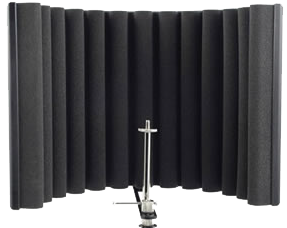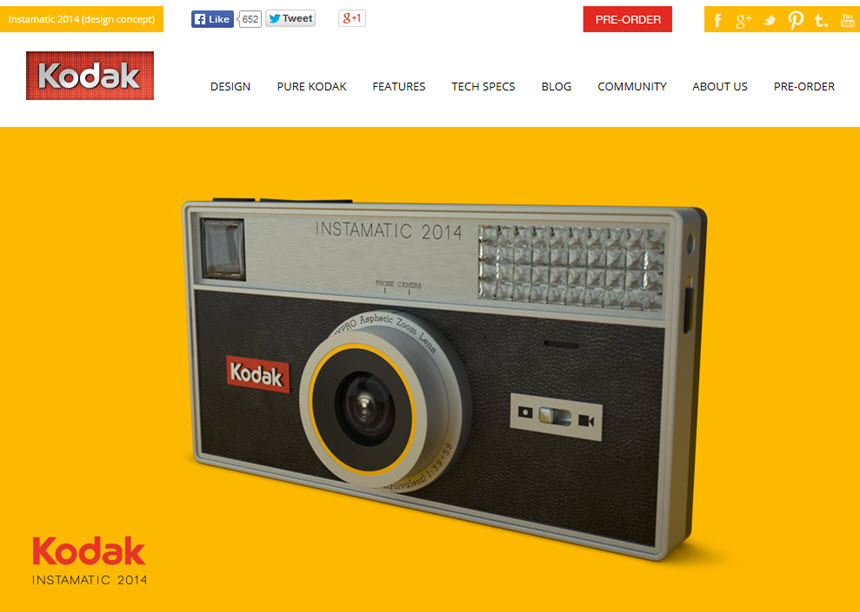Every year or two, I give the website an update. This year the update is somewhat more extensive than in the past. For 2015, the site has been updated to be fully HTML5 and CSS3 compliant. It is also responsive and adaptive. Those are both important considerations at a time when more people use portable devices to view websites. If you're interested in what's going on behind the scenes, I have the details -- probably more than you ever wanted to know.
The most significant change is intended to make the TechByter website more usable on portable devices as well as on desktop systems. Because smaller devices have become so popular for viewing websites, I decided that it was time to fully commit to design that is both responsive and adaptive.
RESPONSIVE design is intended to serve pages that are consistent with the needs of the viewing device, whether that device is a desk monitor that 2000 pixels or more wide or a phone with a screen width of only a few hundred pixels.
ADAPTIVE design is similar, except that it is intended to make subtle modifications to the display if the user changes the window size of the browser.
The best of both worlds has these two functionalities working together and that's what I hope I've achieved here.
 New Graphics
New GraphicsThe microphone in the upper left corner of each page was created by Moi Cody and licensed through RGBStock. Although the image began depicting a microphone on a desk, I modified it so that it more closely resembles a microphone on a boom.
If the podcast opening theme startled you, it's because all of the theme music and incidental music have changed. All of the music is the work of Jason Shaw at Audionautix. Jason is from Pittsburgh and says that he grew up listening to all sorts of music in the backseat of his parents' car on Sunday drives. "My dad would flip the radio from rock to country to classical. He seemed to love all kinds of music, and he infected me with that too!"
Jason Shaw plays multiple instruments, but he also uses sound samples, loops, drum machines, software synthesizers, and "whatever is handy." He says that although he can read music, he generally composes by ear.
Clearly,he has a pretty good ear.
I've updated the function that displays a larger image and the instructions about how to close the larger image (the ESC key is the easiest method) should be somewhat more clear. You can try it out with the image of the new microphone below.
Late in 2014, I decided that it was time to upgrade the microphone, too. I've been using a Cascade Fat Head for several years, but its pickup pattern doesn't work well in my recording environment.
I've now replaced the Fat Head with a Shure SM7B dynamic microphone with an option for boosting what's called "presence". That, combined with the cardioid pickup pattern and an SE Electronics RF-X reflection filter virtually eliminates noise from behind the microphone. And with the presence effect, ambient room noise is also attenuated. Click the image for a larger view.

Cardioid means that the microphone picks up sound in a heart-shaped pattern. The various lines on the image at the left show the pickup area for sounds at frequencies ranging from 250 Hz to 6300 Hz. The view is from above the microphone, so the greatest sensitivity is directly in front of the microphone, with reasonably good response up to about 60 degrees off-axis. Behind the microphone (beyond about 120 degrees off-axis, response is down by 10dB and then quickly to 20dB. What this means in plain English is that sound from behind the microphone will not be heard. This is particularly important in my case.
 The addition of the reflection filter further reduces noise from behind the microphone. Regardless of when I start recording the weekly podcast, several things happen immediately: Every twin-engine airplane within 500 miles of Columbus elects to land at Don Scott Airport, all of the refuse collection trucks (recyclables, trash, and yard waste) decide that this would be a perfect time to work my street, fire and police vehicles choose my neighborhood for test runs, the guy with the Harley drives around the block a dozen times, all dogs in a 3-block radius start barking, and ... well, you get the idea. Eliminating noise is important.
The addition of the reflection filter further reduces noise from behind the microphone. Regardless of when I start recording the weekly podcast, several things happen immediately: Every twin-engine airplane within 500 miles of Columbus elects to land at Don Scott Airport, all of the refuse collection trucks (recyclables, trash, and yard waste) decide that this would be a perfect time to work my street, fire and police vehicles choose my neighborhood for test runs, the guy with the Harley drives around the block a dozen times, all dogs in a 3-block radius start barking, and ... well, you get the idea. Eliminating noise is important.
Sweetwater Audio describes Reflexion Filter X this way: It gives you access to SE's patented acoustic filter technology at an affordable price. SE developed new materials that are lightweight yet rugged enough to stand up to the most demanding work environments. An outer composite panel, a wool fabric layer, an air gap layer, and an inner acoustic-foam layer form a unique, 4-layer design that imparts near-zero sonic coloration to your tracks.
I have no association with Sweetwater other than being a satisfied customer. If you're looking for professional audio gear, I recommend giving Sweetwater in Fort Wayne, Indiana, an opportunity to earn your business.
One of the most significant changes this year is the addition of RSS (really simple syndication) feeds to a new TechByter News Update page. Although the content will be subject to change, I envision using the left column for security feeds and the right column for more general technology news. The center column will contain more visually interesting items.
Because this information can change many times per day, you may want to consider using the TechByter site as a hub for your technology news. If you have recommendations for additional content, please let me know.
That's probably more than you needed to know or wanted to know, but this year's update is the most complete refresh the site had had in more than a decade.
Speaking of new, get a load of what Alien Skin has done with Exposure. Version 7 includes the ability to work directly with raw images and, when used as a standalone application, Exposure 7 saves all edits in sidecar files, which is the process that applications such as Lightroom and Photoshop use. The sidecar files, however, are not compatible with those applications (the podcast misstates this). And the previously separate application "Bokeh" is now included! This is an outstanding way for photographers to start the new year. Certainly there are no indecent exposures here!
When operated in standalone mode, Exposure 7 displays presets (1) and folders (2) on the left. Selected images (3) are highlighted and information about the images is provided. The highlighted image, for example is 3888 pixels wide and 2592 pixels tall. The CR2 file extension indicates that it's a raw image and the camera is identified as a Canon EOS 60D with an EF-S 18-200mm zoom lens. The focal length at the time of exposure was 150mm. The navigator (4) makes it possible to pan around the image if you've zoomed in, and the adjustments (5) are in panels on the lower right.
Click any of the images for a larger view.
When one of the preset types is expanded, you will see specific preset types, either as large or small thumbnail images or as a list. These are where you should start.
Pick the general look you want before even glancing at the settings in the right panel. Some people make the mistake of starting on the right panel and then finding that all of their changes are lost when they select a different preset.
The image depicts a Sichuan Takin at The Wilds, which is about 70 miles east of Columbus in 10,000 acres of land that was formerly strip mined. The Wilds is conservation and breeding facility for these animals, a subspecies of takin (goat-antelope). Listed as a vulnerable species, the Sichuan takin is native to Tibet and the provinces of Sichuan, Gansu, and Xinjiang in the People's Republic of China.
This is an acceptable image as taken, but I thought that Exposure 7 could improve it.
After looking at several presets, I selected Kodachrome 25 as my starting point.
I wondered what would happen if I increased the exposure quite a bit and dropped the contrast back.
This isn't the approach one would generally take for an image such as this, but maybe you're looking for a website background that's more like a watermark. This treatment would work for something like that, but it's not what I was looking for. I did this only so that I should show how the effect can be moderated.
At the top of the settings panel, there's a single control called Overall Intensity and it allows you to mix the effect you've created with the original image.
I reduced the overall intensity to just 37% and that created a kind of high-key effect.
The effect was fine, but it's not what I was looking for.
Before proceeding, I decided to size the image for its intended use. I selected the 8x10 aspect ratio, which would fit a standard desk frame and is also the appropriate ratio for certain larger sizes such as 24x30.
Then, with the image cropped the way I wanted it, I decided that a vignette that darkened the edges would serve to draw more attention to the takin's face.
After starting with a vignette preset, I made various adjustments until I was satisfied with the placement of the vignette and its extent.
Previously, Alien Skin sold Bokeh as a separate application. Now it's included in Exposure 7.
The eye is naturally drawn to areas of sharp focus. Even though the vignette effect had darkened the vegetation around the takin, I thought that softening the focus everywhere but on the animal's face would help.
After centering the bokeh effect about midway between the takin's nose and its eyes, I elongated the circular center to oval shape and rotated it slightly to better fit the takin's face (inner circle). Then I adjusted the transition area (outer circle).
With the process complete, it was time to export the image.
I exported the modified image as TIFF (JPG is another option) and placed it in the same folder as the initial image with "-Exposure" added to the file's name. The podcast states that the export can be performed in raw format, but this is incorrect.
When I opened Adobe Lightroom, the modified image was recognized as a new file in the directory.
Using the standard Lightroom import function, I added the image to the catalog.
Here's the modified image in Lightroom.
Exposure 7 includes several new film-look presets: Kodak Portra 160, 400, and 800; Kodak Gold 200 and 400; and Fuji Pro 800Z and Sensia X-TRA 400 and 800. New black and white filters include Ilford XP2 400, Kodak BW400CN, and T-MAX 400.
And here's the final edited version of the file.
Alien Skin's Jimmy Beach (I think they bought him a new microphone) has a series of programs that explain how to use Exposure 7. This one covers the new features:
 Exposure 7 Reigns Supreme
Exposure 7 Reigns SupremeIt hasn't been that long since I was excited by the new features that Exposure 6 handed to photographers.
The full version sells for $150 and upgrades from previous versions are priced at $70. It's hard to imagine a better way to spend a few dollars if you're serious about photography.
Additional details are available on the Alien Skin website.
Kodak, once the film company, tried to rebrand itself as the picture company when the digital revolution began, but it didn't work out because people don't use photos the way they used to. Now we make websites, share photos by e-mail, make mugs and calendars that contain our photos. We don't have them printed as much as we used to. Kodak even tried manufacturing digital cameras, but the models it created didn't work very well. Now, following bankruptcy, "Kodak" will once again manufacture digital cameras.
Readers will notice the quotation marks and listeners will notice the inflection on the word Kodak. That's because it isn't Kodak that will be building the cameras. The Kodak trademark will used under license by Britain's Bullitt Group, Ltd.
And the cameras won't be just cameras. These Kodak devices will be built in to smart phones.
Bullitt says the devices are aimed at, but are not exclusively for, "consumers who want a high-end experience but aren't always as comfortable using increasingly complicated mobile devices as they would like to be." The new phones and tablets will have custom-designed applications for capturing images, managing images, and sharing images.
Remote management software is expected to allow family members and friends to provide help and support as needed. Despite Kodak's bankruptcy, the name is still a most recognizable brand. Bullitt CEO Oliver Schulte says that his company has used Kodak's heritage to inspire a range of devices that he says "will let users take great pictures and edit, share, store and print them in an instant."
Schulte says that designers of these phones will be uncompromising on the devices' usability and will deliver "simplicity without compromise." One of the primary goals is to give users an easy way to print and share photos. If this works, it will be good financially for Kodak because of the company's strength in processing and printing.
The phones will use the Android operating system and thus will have to fight for market share with a variety of entrenched models from several manufacturers that are known for building phones. Kodak, on the other hand, is known -- but not for building phones.

The website is very professional looking, but there are some oddities here. Big companies such as Kodak usually don't use GoDaddy as their registrar, but:
Domain Name: INSTAMATIC2014.COM
Registrar: GODADDY.COM, LLC
Whois Server: whois.godaddy.com
An additional oddity involves the fact that Kodak is headquartered in Rochester, New York, and the fact that the Bullitt Group is headquartered west of London in Reading, England. The domain, however, was registered by someone in the Czech Republic:
Registrant Name: Martin Hasek
Registrant Organization:
Registrant Street: Francouzska 592/7
Registrant City: Prague
Registrant State/Province: Prague 2
Registrant Postal Code: 12000
Registrant Country: Czech Republic
So, no, I think that's not really the phone and whether or not the site was in any way authorized by Kodak or Bullitt is murky at best. The Instamatic2014 site carries a disclaimer: The INSTAMATIC 2014 Camera - Phone is a design concept by IDIDIDD for Eastman Kodak Company and this product is not available for sale. Materials and artworks on this site are NOT showing actual product by Eastman Kodak Company and are intended to be used only as a case study for potential market release. This website is operated by IDIDIDD and is not affiliated with Eastman Kodak Company. KODAK and INSTAMATIC are trademarks of Eastman Kodak Company. Designed by IDIDIDD. © 2013 All right reserved. Based on that text and the overall quality of the website and the graphics, it seems to me that this is what it says it is, a design concept by IDIDIDD for Eastman Kodak Company.
We'll see later this year. In the meantime, visit the website and see for yourself what the future might look like.
The Chinese government says it's not responsible, but G-Mail is currently unavailable in China. The Global Times (a state-run newspaper) says citizens should stop whining.
Researchers concur that the blocks seem to have been put in place by the Chinese government. Perhaps they gave some consideration to North Korea, but probably not. An editorial in the Global Times said that if China blocked access to G-Mail, it must have had a good reason for doing so.
Apparently in an attempt to come down on all sides of the issue, the editorial then stated that the government probably didn't block access to G-Mail. This is based on the simple fact that neither the Chinese government nor Google managers have explained the outage.
The finally ended up describing it this way: Puzzling.
Earlier this year, China started blocking G-Mail, Google Search, and other services. Users had been able to send and receive messages by avoiding G-Mail's Web interface and instead using POP3 or IMAP e-mail clients.
The Chinese government clearly doesn't like Google and nearly 5 years ago Google moved its Chinese servers to Hong Kong. A year later, China blocked G-Mail access for a time, but attempted to make the problem appear to be Google's fault.
According to the Pew Research Center, workers believe that the Internet does make them more productive. Despite complaints about frequent e-mail interruptions, most workers in the survey credited e-mail with helping them to do their jobs.
In the online survey (of course it was online!), Pew found that more than half of respondents said that Internet technologies have made them more productive. Only 7% said that they were less productive as a result of having Internet access.
But social media have a way to go to gain workers' respect. About 4% said that services such as Facebook, LinkedIn, and Twitter were important to them. Compare that to e-mail: more than 60% of workers said it's important to their jobs.
The results of the survey apparently got Facebook's attention and the company is working on a version of the application that will be aimed at office workers. What could Facebook do that LinkedIn doesn't already do in an office environment? And if LinkedIn is already low on workers' radar, how would Facebook for office workers score any better?
E-mail has been around for a very long time, though. Since before the Internet was called the Internet. Long experience with e-mail might be why it continues to be popular in offices. It'll be interesting to see how it fares with younger workers, some of whom say that e-mail is instant messaging for old people.
Office workers like old phone technology. More than 30% said a landline phone was essential (although it's possible that a lot of those "landline" phones are actually VOIP devices). About 25% said that they felt a cell phone was essential to their jobs.
Xiaomi makes smart phones in China. Unlike Samsung or Apple, companies that also manufacture smart phones in China, Xiaomi is a Chinese company. Its phones seem to be well made and inexpensive, and therefore popular. The company has just raised more than $1 billion from private equity firms.
Three years ago, maybe even two years ago, you probably wouldn't have recognized the name. It may be new to you now, but it's the third largest smart phone manufacturer in the world. Only Samsung and Apple are larger.
Oh, and the largest PC maker in the world is Lenovo. Lenovo is a Chinese company that operates in more than 60 countries and sells computers and other equipment in more than 150 countries. Lenovo's principal facilities are in Beijing; Morrisville, North Carolina; and Singapore. It also has research and development facilities in Japan. Lenovo was founded in 1984, just as the personal computer revolution became a tidal wave, and it acquired IBM's personal computer division in 2005. Nine years later, Lenovo acquired IBM's Intel-based server division. The company also makes smart phones and is the largest phone vendor in China.
Outside China, Xiaomi may run into intellectual property suits by competing manufacturers. A suit by Ericsson temporarily stalled the company's sales in India. One of the interesting things about how the company does business is that it doesn't claim to be a manufacturer. Instead, it sells its hardware at low prices to develop a market for software and services. This isn't exactly a new concept. In the 1950s, RCA virtually gave away 45-RPM record players to develop a market for "singles", the recordings that provided a constant source of income until music went digital.